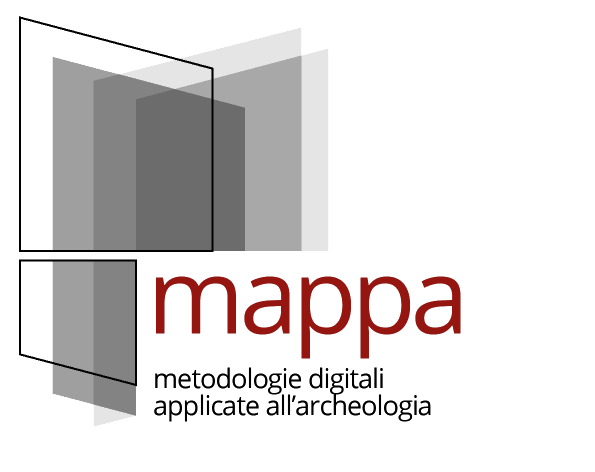What we do
The MAPPA Lab has created and manages the first Italian Open-Data repository (MOD) with the aim of preserving and disseminating the documentation produced during the archaeological investigations. In its years of activity, it has also gained a strong experience in coordination of national and international research projects such as the homonymous MAPPA project and the ArchAIDE project (H2020-RIA). The laboratory is an Open-Lab that has always been inclusive and open to new ideas to experiment in the field of archaeological methodology!

Projects
The MAPPA Laboratory promotes and coordinates interdisciplinary projects at national and international level.
A team of specialists, assisted by researchers and professionals from other disciplines, conducts highly innovative projects ranging from Spatial analysis in Archaeology and Digital Archaeology to Big Data and the application of deep learning systems to archaeology.

Archaeological Impact Assessment
The MAPPA Laboratory guarantees a solid experience in the elaboration of archaeological impact assessment (VIArch), carried out through the integrated approach of archaeological methodologies and techniques: from the bibliographic and archival research to the aerial interpretation, from the stratigraphic readings to the analysis with GIS software.

Archaeological Open Data
Free and open archaeology must be the reality of research. Data sharing is the only way to understand and re-examine the archaeological interpretation process and to answer questions related to new interventions. In a discipline based on destructive methods, the lack of data sharing not only inhibits the research, but it also represents a tragic loss of irreplaceable cultural and historical knowledge. The archaeological data, as data of public interest, should be openly reusable. The MAPPA Lab has always embraced the Open philosophy and boasts the creation of MOD, the first Italian Open-Data repository.

Registration, management and mathematical analysis of archaeological data
Analyse the transformations of the territories over the centuries by crossing the archaeological, historical, geological and geomorphological sources. Understanding the spatial organization and zoning of historical cities that have overlapped over time and which today are buried or only partially visible, to create, through the use of GIS tools and numerical analysis processes,
predictive maps of archaeological potential. Interdisciplinary approaches for the evaluation of archaeological potential: the MAPPA lab has a great tradition of research in archiving and categorizing archaeological data, in data analysis through GIS tools and mathematical/statistical methods, aimed at the predictive calculation of archaeological potential.

Archaeological Big Data
Big Data permit us to learn things that we could not comprehend using smaller amounts of data, thanks to the empowerment provided by software, hardware and algorithms. Their use requires a new archaeological approach: to manage large amounts of data, to accept messiness, to move from causation to correlation. Big Data inform, expose patterns for archaeological interpretation, they are a resource and a tool: data mining, text mining, data visualizations, quantitative methods, image processing etc. can help us to understand complex archaeological information. Big Data opens new and innovative opportunities to read the great historical phenomena, allowing us to re-establish the social role of archaeology.

Communication, dissemination and teaching of archaeological data
Knowing how to tell stories, providing the interpretation of the material source, to all aware or unconscious users of the heritage that surrounds them in their daily lives. Archaeology can not avoid this social function. Producing data must mean making them reusable and readable (data visualization). It also means making them talk (storytelling) both to the scientific community and to the citizens. Today the role of archaeology requires new skills that can broaden its audience and produce increasingly immersive stories, also through the use of contemporary tools.
